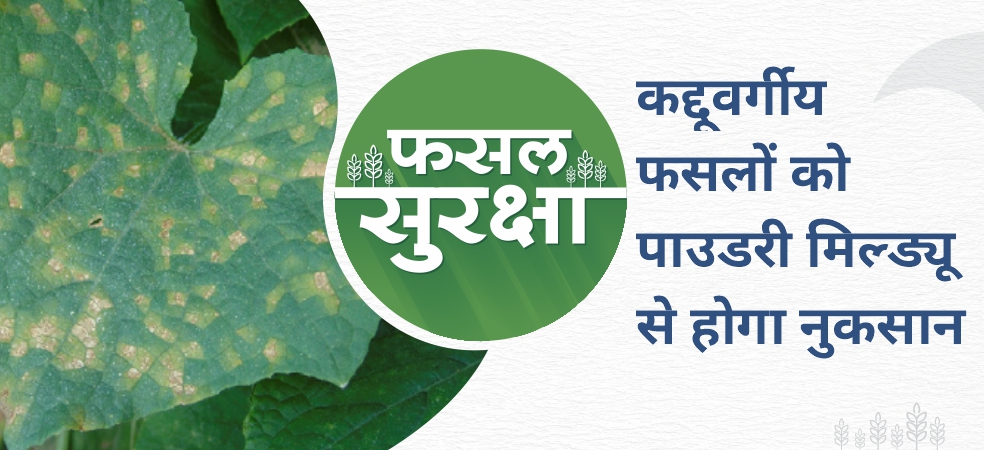-
Downy mildew is a serious and common fungal disease during warm and humid conditions with overcast days. The undersides of leaves are speckled with small, water-soaked spots that become powdery patches of mycelium and spores.
-
The infections are usually concentrated near the leaf veins. The white patches are from 1–6 cm in diameter, with corresponding yellowish-green spots on the upper leaf surface. As the disease progresses, severely infected leaves become necrotic and appear scorched. They curl and fall from plants prematurely. Mildew on immature fruit begins as circular patches of white mycelium and spores that can coalesce and cover the entire fruit. As the fruit ripens, the fungus may disappear, leaving behind grey scars. The scars restrict the growth of the underlying tissue, resulting in deformed fruit. The deformed fruit is edible but has little or no value in the market.
-
Chemical control of downy mildew disease on crops-
-
Chlorothalonil 75 % WP 400 gm or Metalaxyl 8%+Mancozeb 64% 500 gm per acre spray can control the downy mildew disease.
-
For biological control Trichoderma viride 0.5 kg per acre can be used.
ShareAdd your farm with the My Farm section of Gramophone app and keep on getting the exact advice and solutions related to smart agriculture throughout the crop cycle. Share this article with your friends with the share button below.

